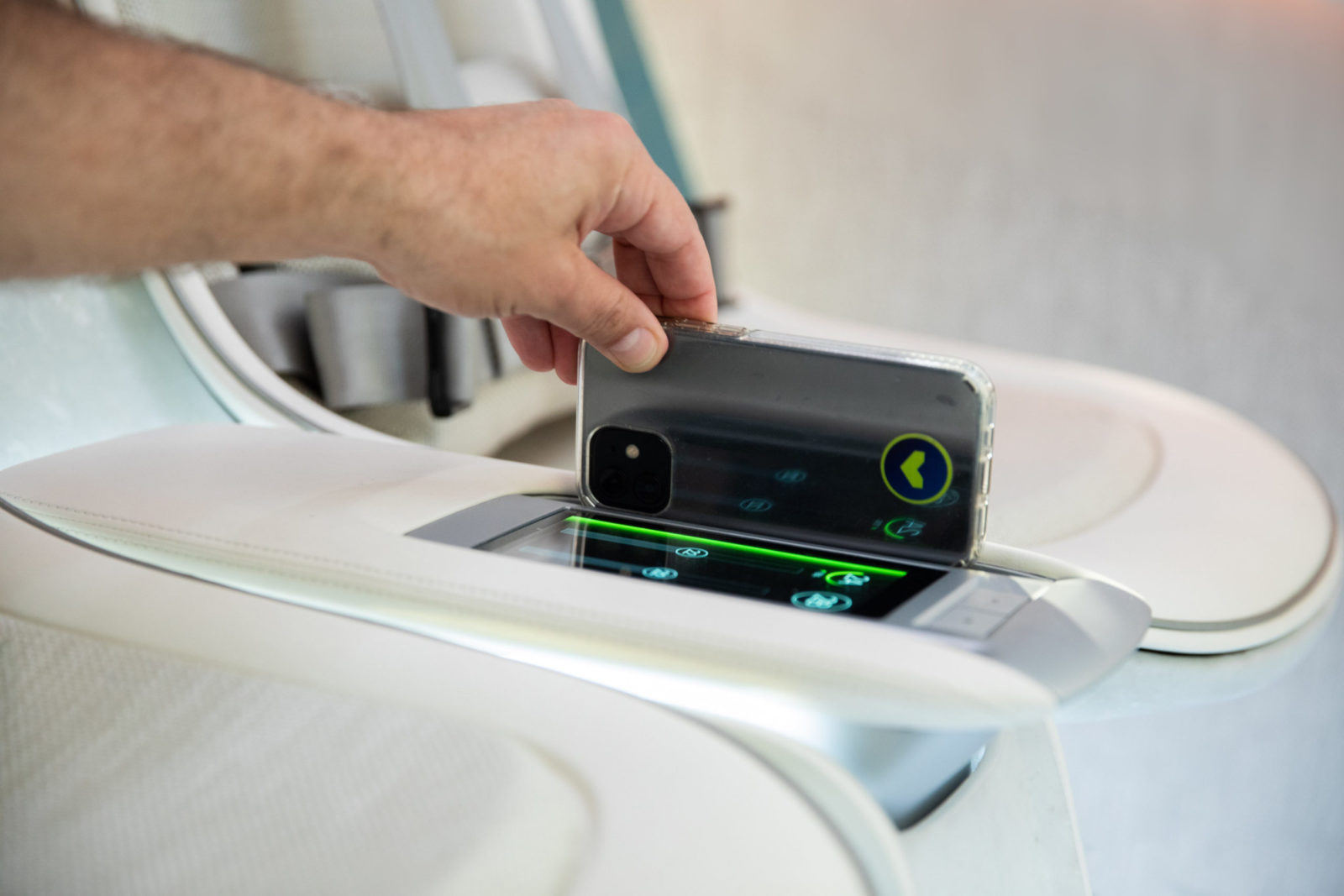Hyundai subsidiary unveils automotive-inspired air taxi cabin design
By Paul Brinkmann|July 19, 2022
Airshow attendees given virtual rides
FARNBOROUGH AIRSHOW, Farnborough, U.K. — While the latest business jets, airliners and warplanes flew back and forth in excessive heat even for summertime on Monday, here in the fully air-conditioned exhibit hall, executives from Supernal, Hyundai’s advanced air mobility company, showed off the cabin design of the company’s planned electric aircraft.
Visitors, including me, took turns climbing through a single gull-wing door on the starboard side of the cabin and into the pilot’s chair. A video played on a screen to give us a virtual sense of what it would feel like to fly the four-passenger aircraft. Supernal hopes to sell the aircraft to operators who, pending regulatory approval, would begin flights in the United States by 2028 and in the U.K. and Europe shortly after.
The shape of the cabin was chosen to mimic that of a butterfly abdomen with “cocoon-like” seats, the company explained in a press release. Although this cabin was a largely plastic model meant to show the scale and basic design, the frame of the flight version will be built of lightweight carbon fiber composite, and the interior will be finished with eco-friendly materials including plant-based leather, recycled plastic fabric and “responsibly sourced woods.” Each seat will have a deployable console evocative of center consoles in cars, complete with a charging station and storage for personal items. Grab handles on doors and seatback will assist with entering and exiting the vehicle. Lighting will adjust during various stages of flight.
“The cabin layout draws on automotive space innovation with a minimized bulkhead, which allows for generous headroom,” the company said.
Mike Whitaker, chief commercial officer at Supernal, emphasized the automobile theme during a panel discussion shortly after the company introduced the new design. “Hyundai has recognized they are a mobility company and that’s not just about cars,” Whitaker said. “They’ve recognized that interconnectability is a huge issue.”
After the unveiling, Whitaker invited me to sit in the pilot’s seat for a virtual experience in which a video of a cityscape appeared in front of the cabin. Buttons and knobs on two side sticks provided visual cues as to what the eventual pilot’s chair could look like.
The lighting was bright as I boarded, and then it dimmed during the virtual flight. Whitaker explained that the lighting could change color for various holidays or events.
A few minutes of video showed a virtual cityscape, mimicking a trip from one rooftop to two others in a few minutes.
“We’re still iterating the designs. We’re looking at storage of bags or luggage and at a more luxurious model that would have only two seats,” Whitaker said.
Supernal is seeking FAA certification to fly passengers in the United States by 2028 and plans to obtain certification in the U.K. and Europe after that. The company set up a temporary, model vertiport in April with London-based Urban-Air Ports in Coventry, 170 kilometers northwest of London, to demonstrate how such an operation might work and look.
Related Topics
Advanced air mobility
Read about Eve’s cabin design here.






